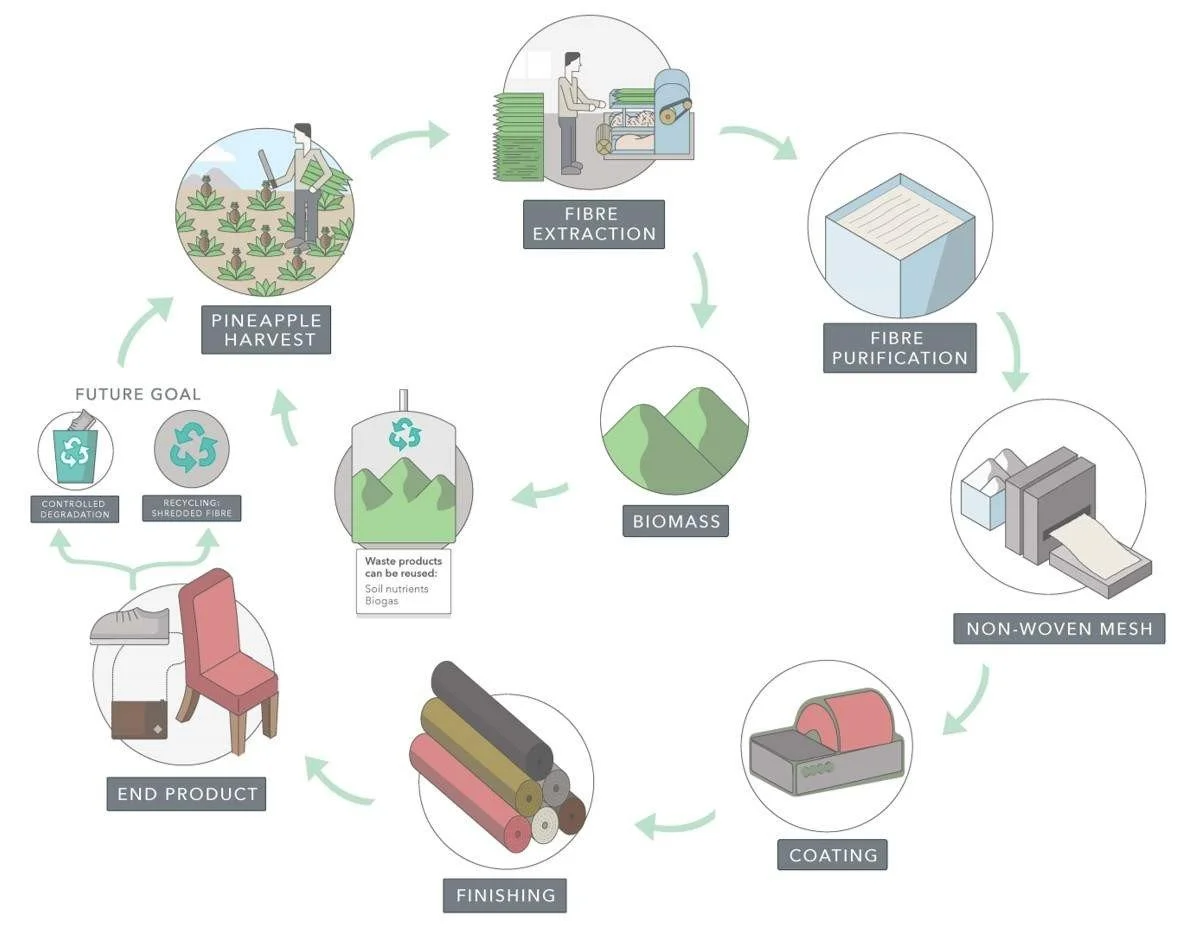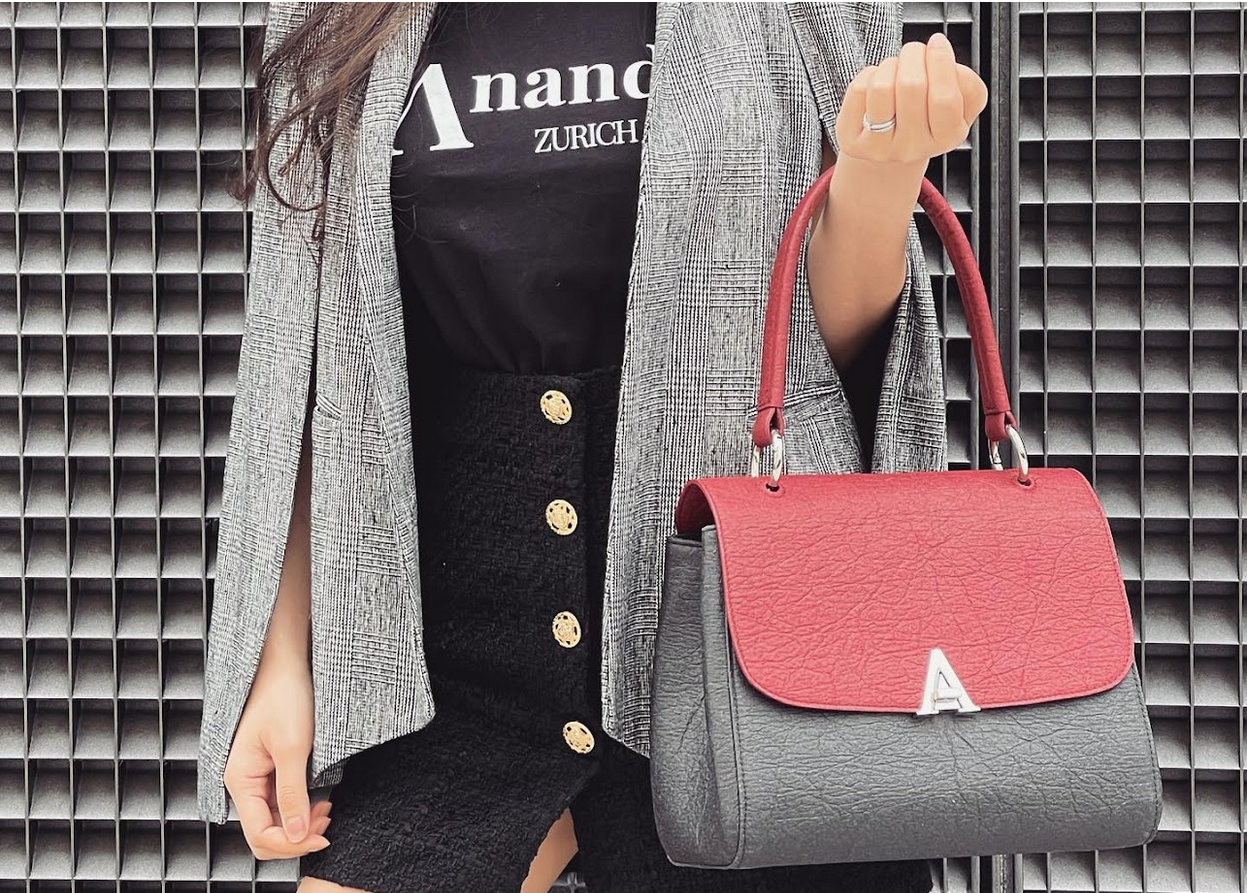How Ananda Zurich Makes Sustainable and Fashionable Handbags with Pineapple Leather (Piñatex)
Leather is one of the most ubiquitous materials used worldwide and has served us well for thousands of years. But we’re becoming more and more aware that manufacturing enough leather to cover the worldwide demand is anything but sustainable.
While it is possible to source leather consciously and sustainably, many brands are starting to ask the question: Are there viable alternatives? One leather alternative that has sprung up on the market is Piñatex - vegan leather made from cellulose fibres extracted from pineapple leaves.
Inspired by the Philippine “Barong Tagalog”
Piñatex was developed by Dr. Carmen Hijosa. While working as a consultant in the leather industry in the Philippines in the 1990s, Dr. Hijosa realised that leather production there wasn’t merely environmentally unsustainable, but that it was also low-quality and damaging to the people working in the industry.
Inspired by the “Barong Tagalog”, a traditional Philippine garment made of pineapple fibers, Dr. Hijosa spent seven years developing the product.
Turning Pineapple into a Leather Alternative
Piñatex is produced from pineapple leaves, a byproduct of existing pineapple agriculture that would otherwise be discarded or burnt as waste. In a process called “decortication”, the cellulose fiber is extracted from the leaves and turned into a non-woven mesh, which is then finished into a natural, versatile textile.
The leftover biomass can still be used as a natural fertiliser or biofuel - meaning that truly nothing is wasted in the production of Piñatex. Here’s the entire manufacturing process and cycle, as described by Ananas Anam, the first company to produce Piñatex, founded by Dr. Hijosa:
Source: Piñatex Manufacturing Process
Piñatex versus Leather and Synthetic Alternatives
“In making Piñatex, 264 tons of CO2 are saved by using (instead of burning) 825 tons of waste leaves from the pineapple harvest – the burning of which would release 264 tons of CO2 into the atmosphere. This is equivalent to charging more than 33 million smartphones.” ~ Ananas Anam
Low environmental impact is one of Piñatex’s major benefits - but not the only one. There’s also the social responsibility factor: Using an unused (until now) part of the pineapple provides additional income for the farming communities, whose pineapple production is a seasonal business.
From the low environmental impact to the high social responsibility, Piñatex is truly developed according to circular economy values - and therefore offers a myriad of benefits when compared to leather and synthetic alternatives:
Ananda Zurich - Fashionable with Piñatex
There still aren’t many manufacturers besides Ananas Anam, but fashion brands are catching on, and the demand for Piñatex is rising. One such brand is Ananda Zurich, a Swiss company that produces sustainable handbags made from - you guessed it - Piñatex.
But sustainability isn’t Ananda Zurich’s only goal. With their handbags, the brand answers the question of how to produce fashion items that aren't just sustainable but also fashionable. The Asimo model is changeable in style and colour. Customers can customise and adapt their one bag with many different coloured elements to fit every occasion and remain individual in style.
“Ananda is an expression of your love for fashion reconciled with your ethics.” ~ Ananda Zurich
Source: Instagram
Transparent Sustainability with Bomler
But how can brands like Ananda Zurich effectively communicate their products’ sustainability in both material and manufacturing processes? More and more, customers are demanding not just a brand’s promise and word, but proof and transparency of sustainable and ethical practice - which is exactly what our Bomler platform provides.
The Bomler Compliance Portal works to connect sustainable suppliers (like Ananas Anam) with eco-friendly brands (like Ananda Zurich) and eco-conscious consumers. Bomler closes the gap between consumer demands and your brand’s compliance transparency. With Bomler, you’re able to
obtain sourcing and production data from your suppliers,
keep track of it within your own organisation, and
make the supply chain information of any product fully transparent to your customers via QR-code - when and where they ask for it.
For more info straight from Ananda Zurich, check out our interview with Rachel Isenschmid, Co-Founder, Ananda Zurich.




